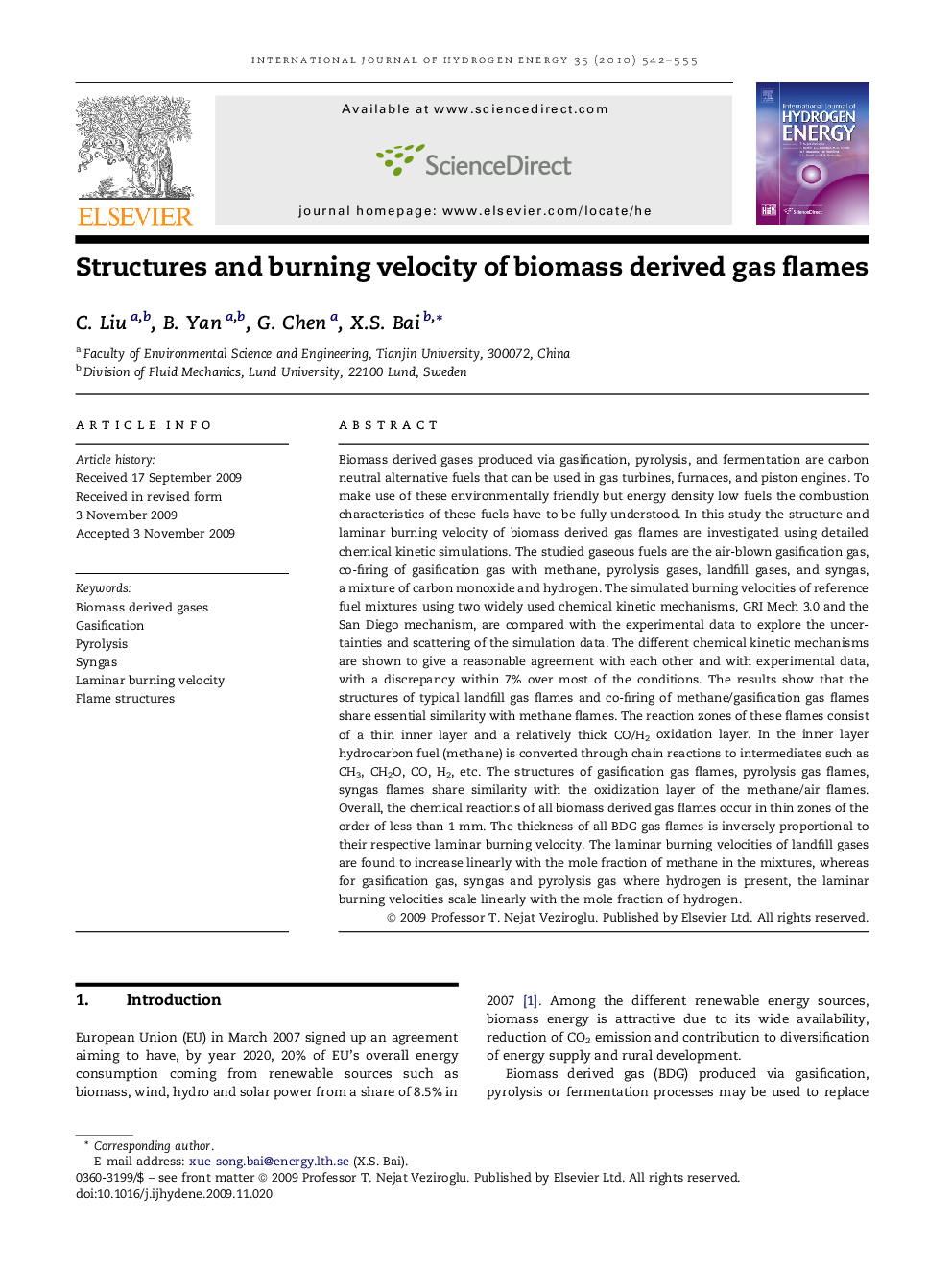| Article ID | Journal | Published Year | Pages | File Type |
|---|---|---|---|---|
| 1281036 | International Journal of Hydrogen Energy | 2010 | 14 Pages |
Biomass derived gases produced via gasification, pyrolysis, and fermentation are carbon neutral alternative fuels that can be used in gas turbines, furnaces, and piston engines. To make use of these environmentally friendly but energy density low fuels the combustion characteristics of these fuels have to be fully understood. In this study the structure and laminar burning velocity of biomass derived gas flames are investigated using detailed chemical kinetic simulations. The studied gaseous fuels are the air-blown gasification gas, co-firing of gasification gas with methane, pyrolysis gases, landfill gases, and syngas, a mixture of carbon monoxide and hydrogen. The simulated burning velocities of reference fuel mixtures using two widely used chemical kinetic mechanisms, GRI Mech 3.0 and the San Diego mechanism, are compared with the experimental data to explore the uncertainties and scattering of the simulation data. The different chemical kinetic mechanisms are shown to give a reasonable agreement with each other and with experimental data, with a discrepancy within 7% over most of the conditions. The results show that the structures of typical landfill gas flames and co-firing of methane/gasification gas flames share essential similarity with methane flames. The reaction zones of these flames consist of a thin inner layer and a relatively thick CO/H2 oxidation layer. In the inner layer hydrocarbon fuel (methane) is converted through chain reactions to intermediates such as CH3, CH2O, CO, H2, etc. The structures of gasification gas flames, pyrolysis gas flames, syngas flames share similarity with the oxidization layer of the methane/air flames. Overall, the chemical reactions of all biomass derived gas flames occur in thin zones of the order of less than 1 mm. The thickness of all BDG gas flames is inversely proportional to their respective laminar burning velocity. The laminar burning velocities of landfill gases are found to increase linearly with the mole fraction of methane in the mixtures, whereas for gasification gas, syngas and pyrolysis gas where hydrogen is present, the laminar burning velocities scale linearly with the mole fraction of hydrogen.
